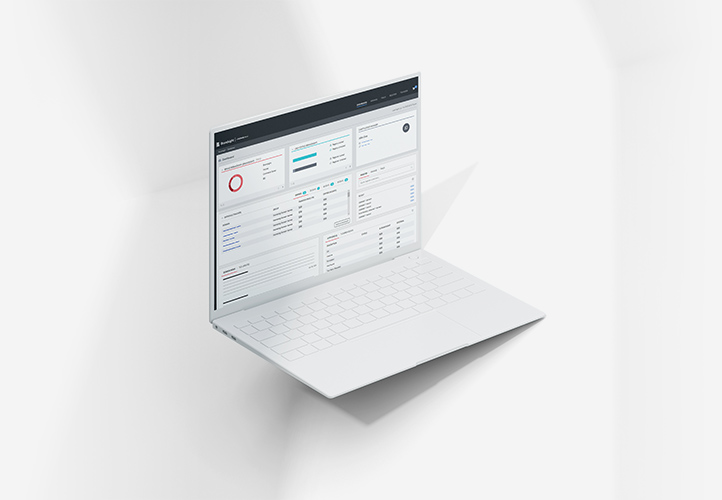Oct 16, 2023 - by Nicole DelleDonne
How to operate a cost-effective domain programme
Tough economic times can offer an opportunity to reassess key aspects relating to a company’s domain strategy, says Nicole DelleDonne of GoDaddy Corporate Domains.
Today, some corporations are facing economic headwinds, and with that comes pressure to ensure they are operating efficiently and effectively.
This evaluation process often includes spend analysis and cost cutting, and the company’s domain name portfolio may seem like a prime cost-cutting target.
However, though many domain portfolios contain outdated or obsolete domains based on earlier registration strategies, organisations must be careful to define and abide by their strategic guidelines when paring back their portfolios.
Slashing away at domains without careful consideration could damage companies and their brands. When a company’s domain programs are strategically run, they represent a significant asset, because they improve overall security, generate positive website traffic, and ultimately deliver revenue benefits.
Here are some strategies for successfully operating a domain program with a tightened budget while still protecting valuable brands. These points will help an organisation to capitalise on the value of its domain program without incurring any additional risks.
Revisit your registrar choices
Companies that have not reviewed their domain programs in more than a decade may be surprised to find how much has changed.
Historically, many have applied a “set it and forget it” attitude about domains and have remained loyal to their registrars for years without question. If your organisation has worked with the same registrar for a decade—or more—perhaps it’s time to investigate whether this registrar is still the right choice.
Some registrars have been in business since the dawn of enterprise domain solutions, and they may no longer offer the best deals. Ask them tough questions about their renewal fees, customer support, and technology options.
Ensure you are not being overcharged. Sometimes small, unknown fees add up to big numbers. Also, verify the individual services you are paying for, and see if you still need all of them.
At the same time, consider reaching out to other registrars that may be able to offer superior service and security, simplified billing, and time saving technology solutions—perhaps at a lower price.
Even if you stick with the same registrar after performing your due diligence on other options, you will probably come out with a better arrangement. Having gone through that process, you can also have confidence that your domain program is optimally run and has been pressure-tested against competitive channels.
Justify and right-size your domain portfolio
Large organisations often have big domain portfolios, and those costs can add up. In tough economic times, it can be helpful to right-size your domain portfolio to ensure that you have the right domains (and the right rates on the ones you are keeping) that will best support your business today.
If you do not already have a well-developed registration and domain management strategy, this is also the time to address this. An upfront investment in the strategy will save you significant time and effort in the long-term and may reduce the risk of poor management decisions.
Once you have the domain strategy that incorporates data on your key brands, markets, and many other factors, you can fold in unique portfolio data to safely decide which domains can be cut and which should be kept. Each domain the company invests in should have a return on investment by supporting or protecting an important brand.
When you are deciding where to trim your portfolio, it is an ideal time for your registrar to prove its worth as a key advisor. Roll up your sleeves and work collaboratively with your registrar to gather data. Data-driven insights can tell you which domains are worth keeping versus which can be safely lapsed.
On the whole, it’s crucial to be well-versed on the value the domain program brings to the business and to be able to communicate that proactively. Without these deeper insights, domains may be just seen as an unnecessary extra cost.
Convey to management that you understand the need to cut costs, but also explain why certain domains are critical for the business, their positive effects, and why their expense is justified.
Evaluate defensive registrations
Around 90% of a typical corporate domain portfolio contains defensive registrations such as negative domains, typo domains, lookalikes, relevant keywords, and markets the company may want to grow into.
Companies need to ensure they own the right defensive domains and are redirecting them back to their own content to create a seamless user experience. Crucially, they shouldn’t let go of domains that protect them from bad actors, from competitors, and those they have recovered from enforcement actions. However, defensive domains must pull their weight and have an ongoing purpose.
Trimming needs to happen, but it’s where to trim that makes the difference. Make sure defensive domains still align with the company’s current business strategy. Some domains may be random domains that have nothing to do with the company’s core trademarks. The company could potentially sell those domains and bring money into the program.
Measure the value of domains
Data metrics and analytics can help organisations measure performance across their domain portfolio. Each company’s measured key performance indicators (KPIs) can be customised to report on specific domain name goals and preferences. Some foundational KPIs to track to leverage for reporting and accountability purposes include:
- Size, spend and year-over-year growth;
- Domains per brand;
- Percentage registry locked;
- Percentage resolving to live content (should be 50% or more);
- Domain health/hygiene, including # of domains reviewed for security/compliance purposes;
- ROI traffic (and revenue) generated by the domain portfolio.
To gain more insights, tools such as Brandsight from GoDaddy Corporate Domains (create report card style reports to analyse your domain portfolios and benchmark how they are performing over time. This empowers your domain professionals to communicate value within the organisation, identify areas where they are excelling, and define plans for areas that need improvement.
Conclusion
Companies can run a successful domain program even in the face of economic headwinds. In fact, this can be the optimal time to take a fresh look at the program and ensure that it delivers value to your business.
To achieve this, ensure you have the right registrar, strategy, and domains which all demonstrate measurable value to the organisation’s brands. If the domain portfolio aligns with the company’s strategy, it has a much better chance of maintaining its integrity even as budget cuts come knocking.
The domain portfolio is much more than an additional cost—it is the lifeblood of the company’s brands and its face to the world. Armed with the right data and insights, your domain professionals will be able to convey the portfolio’s value convincingly to major stakeholders.
Nicole DelleDonne is senior director, sales, at GoDaddy Corporate Domains. With ten years of direct industry experience, she has worked with some of the world’s most valuable brands to implement domain management solutions designed to protect and promote their businesses online. She can be contacted at nicole@gcd.com.
This article first appeared in the May 31, 2023 issue of World IP Review.

Nicole DelleDonne is Senior Director, Sales. With ten years of direct industry experience, she has worked with some of the world's most valuable brands to implement domain management solutions designed to protect and promote their businesses online.
Recent posts from Nicole DelleDonne
